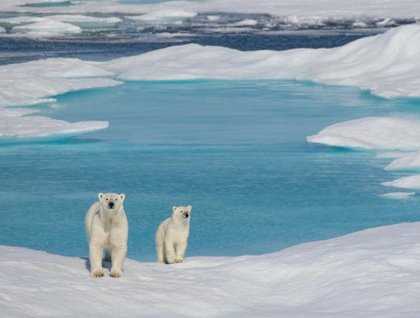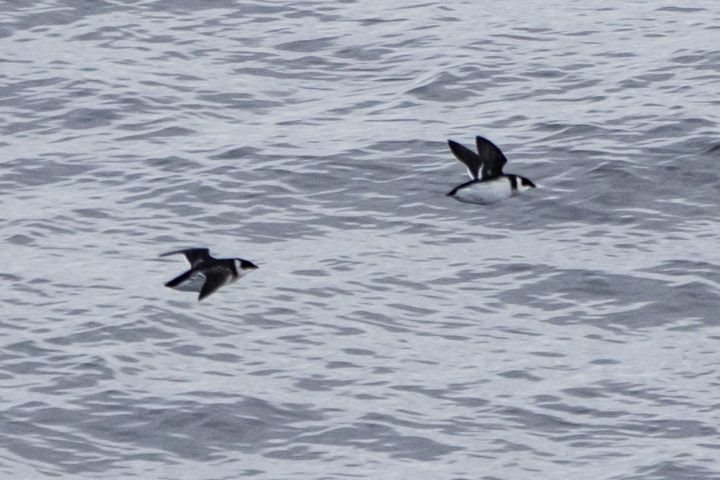This morning those aboard National Geographic Explorer awoke off of Cape Macculloch, the northeastern shore of Baffin Island not far from Pond Inlet. Blessed by but another beautiful bluebird day the ship explored an amazing mass of sea ice that encapsulated the glorious icebergs of Greenland carried by the currents.
Searching for Ursus maritimus it was not long after our wake-up call that the first polar bear of the voyage was spotted on the ice on the far end of a floe. Further down Baffin Bay we encountered a few seals on the ice and another bear that turned out to be a mother and cub. They explored the ice edge a bit before swimming for a further floe. Soon after they departed another mother and (younger) cub surfaced in almost the exact same spot! Their curiosity was the reward of the day as they approached the ship cautiously and curiously over beautiful hummocks of ice and pools of standing blue water. Jumping over gaps in the ice, standing up and sniffing us down—it was one of those once in a lifetime encounters that we long remember.
Our next encounter was equally as great as we encountered a large male who had blood on his side and back (most likely from an encounter with another male). All ten bears we saw today appeared to be in good shape as they hang with the southbound flowing ice trying to catch seals for as long as possible. Typically these animals should be at their healthiest as the spring seal pup hunt is their most fruitful feeding period of the year. Obviously not an easy catch the bears have evolved different strategies to obtain their prey by stalking, still hunting, and using the wind and cover of hummock ice to sneak up on their seals. Healthy bears typically prefer to eat only seal blubber as it produces less urea than a high protein meat diet and decreases the need for water from external sources, which is difficult to obtain in the winter. The metabolism of blubber thus allows them to generate water metabolically within their own bodies so they do not become dehydrated.
While bears spend 50% of their time hunting only less than 2% of hunts are successful, and it is just absolutely amazing that such a large animal living in such a harsh winter landscape can survive on 65-70 seals a year. Seeing this iconic species of the High Arctic on the sea ice platform that it thrives on was undoubtedly one of the highlights of the trip!









